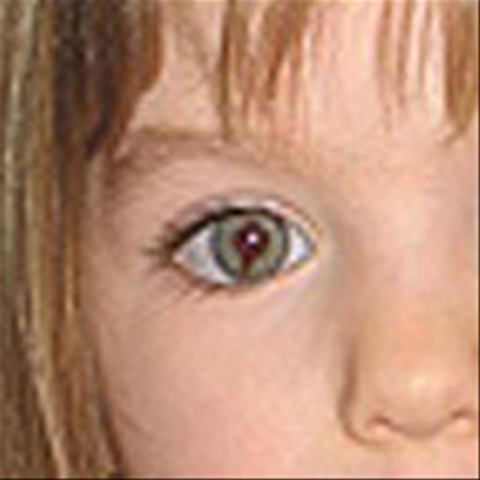{Practical 4...Pupils!}
Wednesday, February 10, 2010
1. The Pupillary Light Reflex Pathway
--- afferent pathway
__ efferent pathway
Pupillary actions are controlled via the secondary pathway. The pupil has two actions, dilation and constriction. Dilation is controlled by the dilator muscle innervated by the sympathetic nervous system. Constriction is controlled by the sphincter muscle which is innervated by the parasympathetic nervous system.
Afferent Pathway
The pupillary light reflex starts at the retina, when light hits on the retina, photoreceptors (rods and cones) will absorb the light and transmit impulses. The impulse then travels through the optic nerve. The nasal nerve fiber goes to the opposite optic tract at the optic chiasm while the temporal nerve fiber continues in the ipsilateral optic tract. The impulse is transmitted to the pretectal nuclei. Axons from each pretectal nucleus pass ipsilaterally and contralaterally to the Edinger Westphal nucleus (EWN), found in the brain. The EWN processes the information about the level of light received. (With reference to Figure 1)
Efferent pathway
 Figure 2. Sympathetic Pupillary Pathway (Oculosympathetic)
Figure 2. Sympathetic Pupillary Pathway (Oculosympathetic)In the efferent pathway, there are two exits for the impulses to travel, through the EWN and the hypothalamus.
1) The efferent parasympathetic pathway starts from the EWN. The impulse is sent from the EWN via the oculomotor nerve to the cavernous sinus and finally to the orbit. The parasympathetic components synapse in the ciliary ganglion in the orbit. Then enters the eye through the short posterior ciliary nerves innervating the ciliary body (includes lens accommodation) and the iris’s pupilloconstrictor muscles. (With reference to Figure 1)
2) The efferent sympathetic pathway starts from the hypothalamus. The nervous system is alienated into three parts, central neuron being first, preganglionic neuron as second, and, lastly, postganglionic neuron. The central neuron (1st), which is located in the brainstem and cervical cord, innervates from the hypothalamus down the cervical spinal cord. The preganglionic neuron (2nd), is found in the chest and in the neck, journey upwards to the superior cervical ganglion at the carotid bifurcation. The postganglionic (3rd) fibers travel to the iris through the carotid plexus, the cavernous sinus and the long ciliary nerves. The postganglionic fibers are joined with the ophthalmic division of the trigeminal nerve after the fibers run upward around the internal carotid artery into the cavernous sinus. The orbit is entered through the nasociliary branch of the ophthalmic division, allows the entering of the emerged nerve fibers from the cavernous sinus. Finally, the innervation terminates at the iris dilator muscle after entering the eye. (With reference to Figure 2)
2. Near Pupillary Reflex Pathway:
The near pupil reflex is not stimulated by the change of the intensity of luminance, but looking at near and distant object. Convergence, accommodation and pupillary constriction occurs when looking at near and distant object.
The afferent pathway of the pupillary near response is the same as the visual pathway, which is to the striate cortex. The information is then relayed to the front eye fields, the oculomotor nucleus and the EWN from the striate cortex, avoiding the pretectal nuclei in the dorsal midbrain. When the dorsal midbrain and pretectal nuclei are damaged, light-near dissociation occurs as the arrangements of light and near pupillary pathways are near. Finally, the medial rectus muscles are innervated via the oculomotor nerve while the parasympathetic pathway innervates the iris sphincter and ciliary body muscles.
References
Spector, R. H. The Pupils [online]. Available from: http://www.ncbi.nlm.nih.gov/bookshelf/br.fcgi?book=cm&part=A1745 [Accessed 2 February 2010].
Weon Jun. Pupil Anomalies: Reaction and Red Flags [online]. Oregon: Pacific University. Available from: http://www.pacificu.edu/optometry/ce/courses/19433/pupilanompg1.cfm [Accessed 2 February 2010].
Ocular Physiology Practical 4, 6:56 PM
Pupil is a circular opening
located in the centre of the
iris of the eye that controls
the amount of light
entering the eye.


